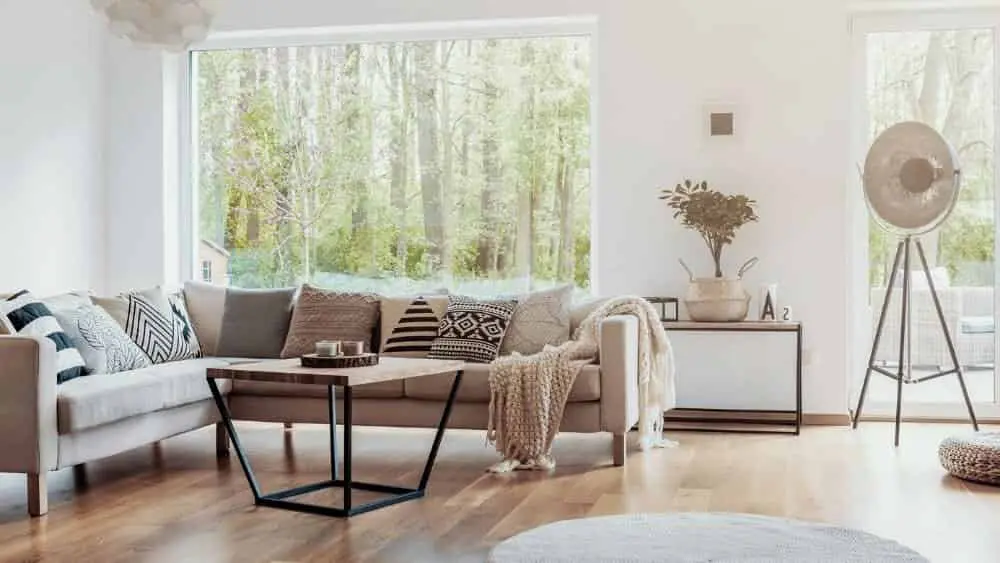
A few years back, the Department of Energy (DOE), working with Lawrence Berkeley National Laboratories and industry window manufacturers, set a goal for the development and commercial production of advanced, dynamic and super-high-energy-efficient windows by the year 2020.
These “super windows” would offer up to seven times the insulating value (U-factor) of double glazing and help create “zero energy” homes, or passive homes. The National Renewable Energy Laboratory (NREL) envisioned adding integrated photovoltaic cells to these products, thus creating windows that could be integrated in the lighting, heating and cooling systems of your home.
Thanks to cutting-edge window manufacturers, we’re pretty close to meeting those goals already.
Currently on the market are high-performance, advanced window designs that can reduce energy loss to near zero. You can select hurricane, burglar or even blast-resistant windows to enhance safety and security. You can even opt for “smart” windows with electrochromic coatings that can be adjusted in a wide range between clear and opaque to control solar heat transmission, manage energy loss and provide increased privacy.
“Manufacturing and technological advancements in our industry have allowed us to enhance window offerings for homeowners during the past several decades,” says John Stark, channel manager with Simonton Windows.
“One of the best examples is the development of impact-resistant glass packages that help protect homes from severe weather, burglary and noise penetration. These glass packages help keep a home safe while at the same time making it more energy-efficient, which generally results in lower heating and cooling bills.”
High-Performance Windows
Today’s high-performance windows with insulating double- or triple-paned glass and low-E coatings have cut U-factor ratings. With the addition of highly insulated framing systems and warm-edge technology (i.e. low-conductive spacers between glass panes that increase the insulating qualities of a window) you can select windows that dramatically reduce your home’s heating and cooling costs.
Low-E glass is a special insulated window glass that features a factory-applied, thin-film coating or metal or metallic oxide that allows light to pass through but blocks UV rays and reduces heat transmission, cutting energy loss by 30 percent to 50 percent.
Windows with low-E glass are now the norm. Filling the space between glass panes with inert gases (argon or krypton) provides even greater insulation. Want even higher performing windows? Low-e glass that filters a portion of the spectrum of light can push the bar even further.
A wide variety of low-E glass is available to meet varying design needs and climate conditions, such as Solarban Solar Control Low-e Glass, a spectrally selective glass option from PPG, and ClimaGuard Low-E residential glass from Guardian Industries. ClimaGuardSPF, available on Low-E and Super Sun Blocker glass, blocks 99.9 percent of UV rays.
The same features of a window that make it energy efficient also tend to increase the window’s acoustic properties. A typical double-pane insulated glass window has an STC (Sound Transmission Coefficient) rating of about 30. The thicker glass layers with laminated glass also help reduce exterior noise heard within the home.
It’s important to remember, however, that the energy and acoustical benefits of a window relies, to a large extent, on how well the window is installed, weather-stripped and maintained.
Windows that Provide Safety and Security
When it comes to providing safety and security, there is a smorgasbord of glass and window products available. Scan the Internet or your local building store and you’ll find windows that are labeled as hurricane-resistant, impact-resistant, burglar-resistant and/or blast resistant.
The difference is primarily in the glass. Glass that is tempered, heat- or chemically-strengthened, is stronger than annealed glass, but still breakable. Both impact-resistant windows (think hurricane) and blast-resistant windows (think terrorism) rely on laminated glass. Burglar- and forced entry-resistant products are similar to hurricane-resistant windows, but use a thicker version of laminated glass. Ballistic- or bullet-resistant windows count on multiple laminated layers and are very thick and heavy.
Laminated glass is typically made by sandwiching two or more layers of glass around an inner layer of plastic, such as polyvinyl butyral (PVB) or polycarbonate.
The demand and code requirements for impact-resistant window products have expanded beyond coastal hurricane zones and are increasingly apparent in areas where high winds or tornadoes are common.
Building codes for high-wind areas focus on design-pressure ratings, which express the amount of pressure a window can withstand to resist breakage during storm conditions when closed. There are two safety glazing categories: Category I and II. Compliance with Category II is required for windows in the most hazardous locations. Industry labeling programs make it easy to select the appropriate product for your area.
Typically thicker, heavier and more expensive than conventional glass, ballistic- and blast-resistant glass is seldom specified for residential use. However, engineers at the University of Missouri and the University of Sydney in Australia, with a grant from the Department of Homeland Security, are working to develop a thinner and lighter blast-resistant glass that could expand the market for such protection.
Primarily used for commercial and government buildings and in curtain-wall applications, blast-resistant or blast mitigation-laminated glass must meet high standards. To meet hurricane-resistant glass standards, a window needs to withstand a nine-pound, two-by-four plank shot out of an air cannon at various distances and speeds, resist ball bearing impacts and pass design pressure tests.
Hurricane-proof glass is rated in terms of pounds per square foot (PSF) it can resist. Ratings generally range from 30 PSF to 90 PSF. Blast-resistant products are tested to withstand the pressure and impulse (pressure duration) of a bomb detonation as measured in milliseconds and pounds per square inch (PSI). The Department of Defense guidelines ask for a one-to-four rating, which means the product must withstand a minimum 144 PSF.
Blast resistant glass manufacturers include, among others, Guardian Industries (Armour-G glass), Oldcastle BuildingEnvelope (ArmorResist glass) and DuPont.
Dynamic, Smart and Switchable Glass
Dynamic windows, often called “switchable” or “smart” windows, are windows that change from clear to opaque or that can be variably tinted in response to an electrical stimulus, heat or sunlight. Though more expensive, these can maintain your home’s comfort level and save energy by reducing the demand on your home’s lighting and HVAC system.
This state-of-the-art technology includes electrochromic glass windows that are programmable and electronically tintable, liquid crystal glass window products that change from clear to a white-out state when power is continually applied, suspended particle device products that switch from dark blue to clear when powered, photochromic windows that self-tint in response to sunlight intensity and thermochromic glass that changes from clear to diffuse in response to heat (i.e., temperature change).
“Switchable” electrochromic and “smart” self-tinting window products are already available in the residential market.
Now that you’re debating the choices in high-performance windows, weather- and disaster-resistant window products, and dynamic or switchable glass technology, you might want to consider another window possibility: self-cleaning or easy-cleaning glass.
A low-maintenance material is created with a microscopic titanium dioxide coating that is applied to the glass when it is formed. The specialty glass is produced by several glass fabricators, including PPG (SunClean Glass), Pilkington Building Products North America (Activ coating) and Saint-Gobain Glass (Bioclean coating). It’s available as an option on window products from some national window manufacturers, including Thermal Industries, Inc. and Sunshine Windows.
Self-cleaning, smart, hurricane-resistant, impact tough and highly energy-efficient, today’s windows are nothing like windows of the past. With today’s rising energy costs, extreme climatic conditions and other threats, protective, advanced and high-performance windows are a priority for many home buyers.
For more ways to save with energy efficiency, read about smart doors and other ways new homes are built more energy-efficiently.

Roy Diez is a freelance writer and marketing professional specializing in the architectural, building and construction industry. He is a former editor-in-chief of Professional Builder magazine.
 When Is the Best Time to Buy a House?
When Is the Best Time to Buy a House?